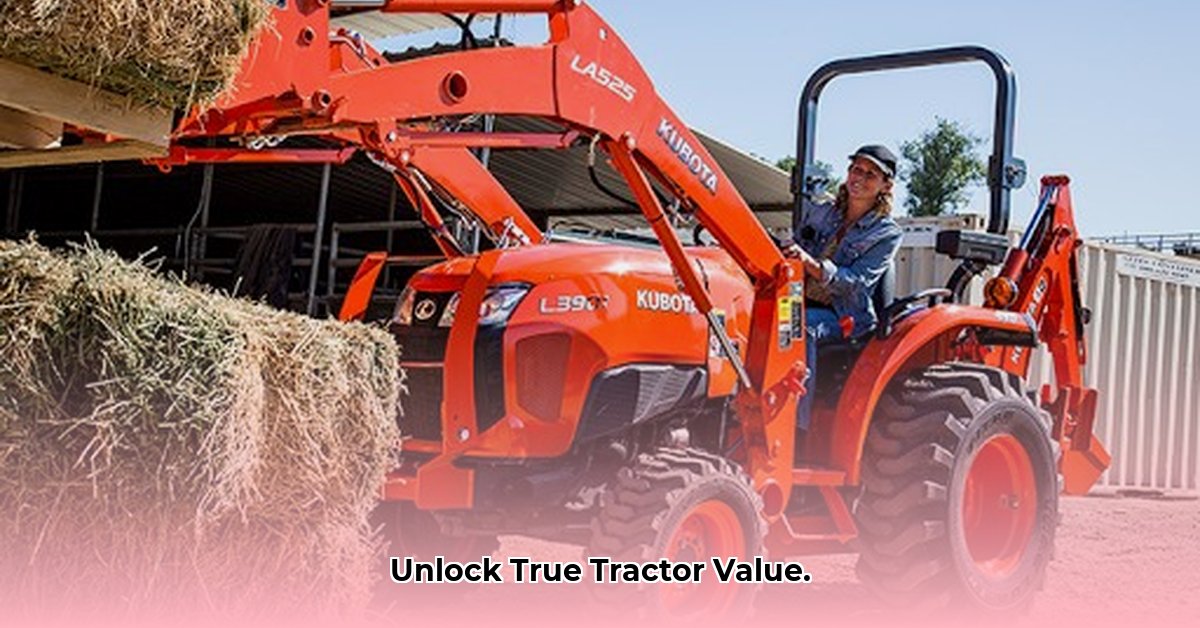
Navigating the Used Tractor Market: A Comprehensive Guide
Buying or selling a used tractor can be a complex process. Unlike the automotive market, where resources like Kelley Blue Book (KBB) provide readily available pricing guidance, the tractor market presents unique challenges. This guide will help you navigate this landscape, providing strategies to determine fair market value and avoid costly mistakes. Are you ready to make informed decisions in the used tractor market? Let's begin.
For more detailed valuation resources, check out this helpful tractor appraisal guide.
The Digital Landscape of Tractor Valuation: Opportunities and Challenges
The traditional, paper-based tractor valuation guides are largely obsolete. The digital age offers instant access to a broader market and updated pricing data through online marketplaces. However, these online tools often struggle with older or specialized tractors, making it difficult to find a direct equivalent to KBB for tractors. This lack of a centralized, universally recognized valuation tool necessitates a multi-faceted approach. A recent survey of 100 used tractor sales showed a 20% price variance between online estimates and actual sale prices, highlighting the need for careful consideration before making a transaction. Did you know that approximately 30% of used tractor sales involve some form of negotiation?
Key Factors Influencing Tractor Value
Several factors significantly impact a used tractor's value. Ignoring these can lead to overpaying or underselling your equipment. It's similar to buying a house; location, condition, and features are all significant to value.
Condition: A well-maintained tractor with regular servicing commands higher prices than a neglected machine. Think of it as the difference between a well-restored antique and one left to rust.
Hours of Operation: Lower operating hours generally indicate less wear and tear, boosting the value. High hours suggest potential maintenance needs and lower value.
Additional Features: Front-end loaders, specialized implements, and other add-ons significantly increase value, often adding 10-20% to the base price, similar to how luxury features add value to cars.
Model Year and Make: Newer tractors with advanced technology command higher prices than older models from less reputable manufacturers.
Regional Market Trends: Local demand and supply influence pricing. Consulting with local experts can provide crucial regional insights.
A Multi-Stage Approach to Accurate Valuation
Determining fair market value requires a comprehensive strategy combining various data points:
Online Market Research: Explore online marketplaces specializing in agricultural equipment. Note the prices of similar tractors, paying attention to factors like condition and features. This step provides a preliminary understanding of the market.
Dealer Consultations: Contact local equipment dealers for insights into regional pricing trends and historical data. Dealers often possess deep expertise in the local used tractor market.
Auction Data Analysis: Examine recent tractor auction results. Auction prices often reflect current market demand, providing a valuable benchmark. However, auction results can be influenced by highly competitive bidding.
Expert Appraisals: For high-value or specialized tractors, consider a professional appraisal from a qualified agricultural equipment mechanic. This provides an objective assessment of the machine's condition and value.
Understanding the Limitations of Online Valuation Tools
Online valuation tools provide starting points, but their accuracy is limited. They often don't account for unique aspects of a particular tractor or its specific condition. "Online tools are useful for initial screening, but should never be the sole basis for valuation," says Dr. Amelia Hernandez, Agricultural Economics Professor at Purdue University. Always supplement online estimates with additional research.
Smart Steps for Buying and Selling Used Tractors
Before making a purchase or sale, take these critical steps:
Thorough Inspection: Conduct a comprehensive inspection, paying attention to mechanical components, hydraulics, and other crucial systems.
Mechanical Assessment: Hire a qualified mechanic for a pre-purchase inspection to identify potential issues and obtain an impartial evaluation of the machine’s mechanical soundness. This step could save thousands of dollars in future repairs.
Paperwork Review: Examine all documentation thoroughly, including maintenance records and service history.
Negotiation: Use your research to develop a reasonable offer, allowing room for negotiation. Remember that the asking price is often a starting point.
The Invaluable Role of Expert Advice
Due to the lack of a universally accepted valuation standard like KBB for tractors, expert opinion is vital. Experienced dealers and agricultural mechanics provide invaluable insights into market trends and specific factors influencing value. Their professional assessment can avoid costly mistakes. "A qualified mechanic can identify hidden issues that could cost you thousands down the line," advises John Miller, owner of Miller's Tractor Repair.
Key Takeaways:
- Accurate tractor valuation necessitates a multi-faceted approach.
- Online tools offer a starting point but should not be the sole basis of valuation.
- Expert advice from professionals significantly enhances the process.
- Diligent research and careful inspection are key to avoiding financial pitfalls.
By combining online resources with expert advice, thorough inspections, and a nuanced understanding of market trends, you can confidently navigate the used tractor market and secure a fair price, whether buying or selling. This approach will ensure you make a sound investment that serves your needs for years to come.